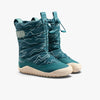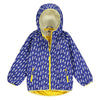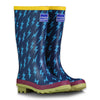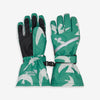
KS1 – Science – Icy Habitats
Download Our Key Stage 1 – Science – Icy Habitats Worksheet Here
Learning Objective
- To perform simple tests
- To identify that most living things live in habitats to which they are suited (from KS1 Science curriculum: Living Things and their Habitats)
Resources
- Pictures of polar bears and penguins in the Arctic (try to include some of the animals swimming)
- Bucket full of very cold water
- X2 washing up gloves
- Cling film
- Shortening or lard
Introduction Activity
- Ask children what winter weather is like? Is it cold or hot?
- Show children pictures of polar bears and penguins in the Arctic.
- Ask children whether they think it is colder in the Arctic than where they are. How do they know? What are the clues?
- Explain that animals who live in the Arctic have special ways of dealing with the cold and that their bodies are different to ours.
- They live in a habitat to which they are suited.
- Explain that polar bears and fat have thick layers of fat which keep them warm.
Freezing Hands
1- Tell children that they are going to do an experiment to show how fat can keep bodies warm.
2- Show children the large bucket of freezing water and ask for a volunteer to see how long they can keep their hand in it before it gets too cold!
3- Ask another child to come and be a polar bear. Ask them to make a fist and pop a large washing up glove over the top of their fist. Then completely cover the glove with loads of lard/shortening. After that wrap it up in cling film to keep it in place.
4- Child with glove covered in fat to then submerge their gloved hand in the water.
5- As before, ask children to count how long they can keep it submerged and then compare results.









